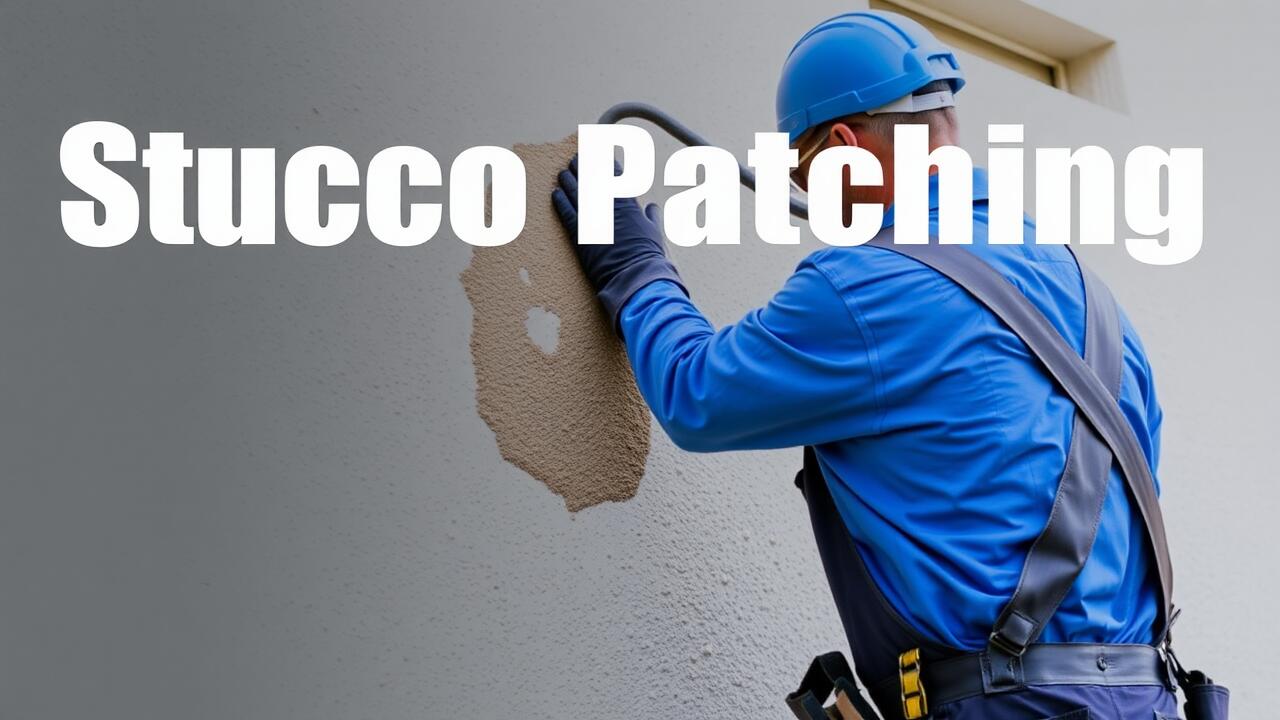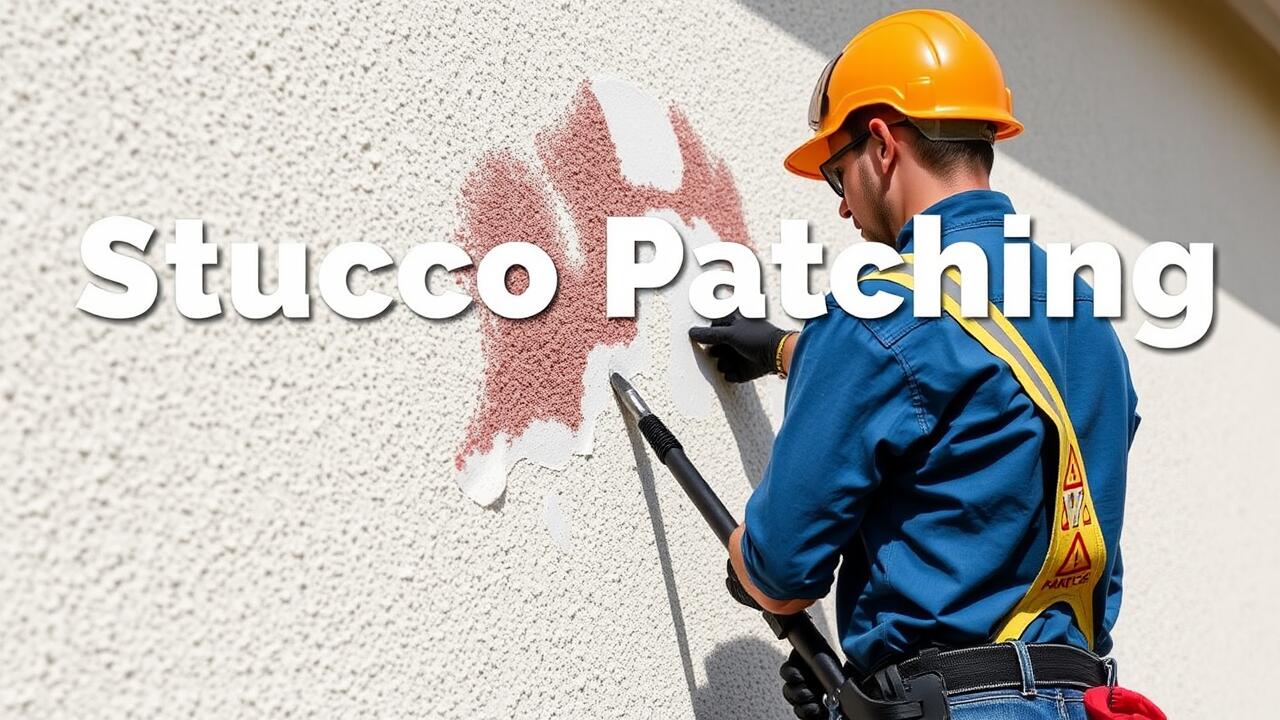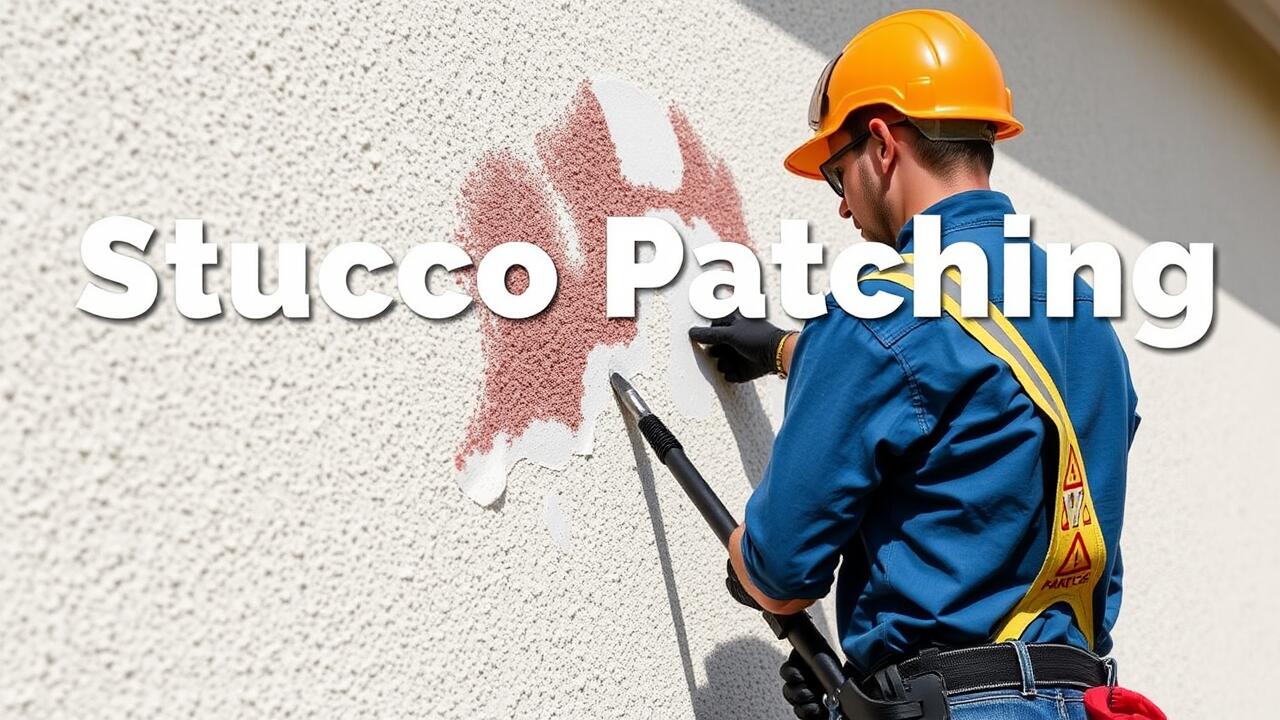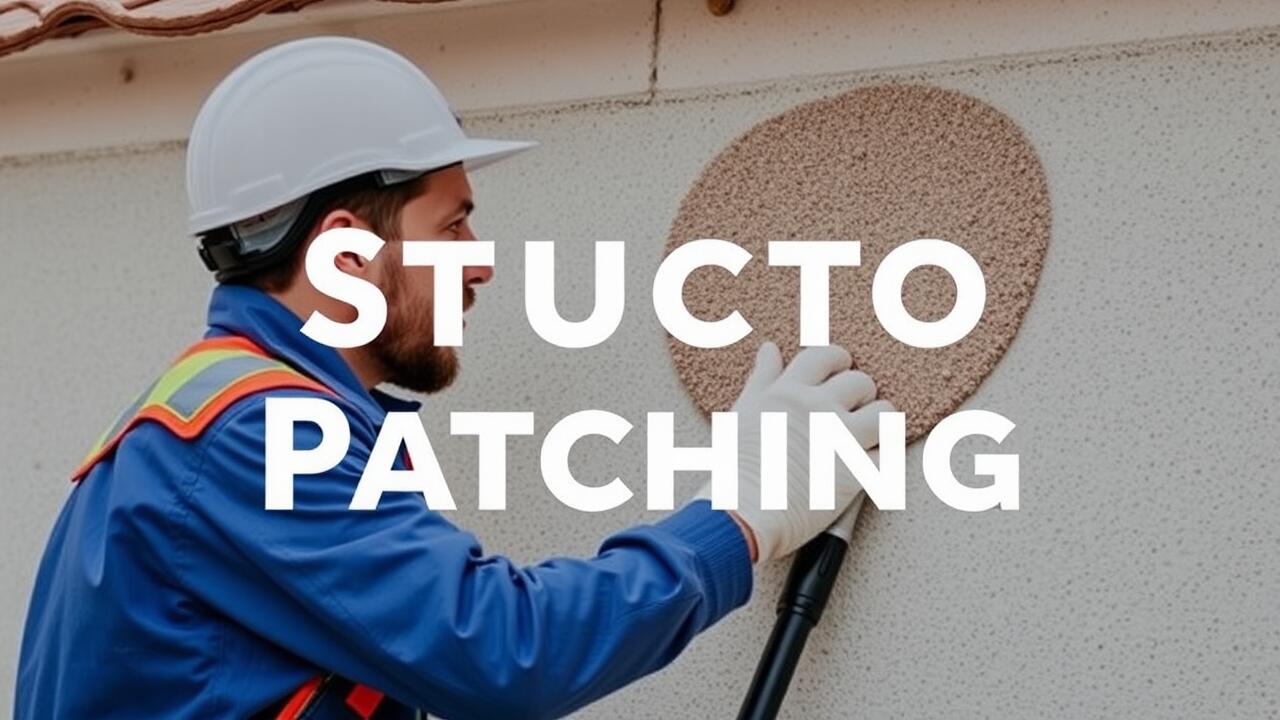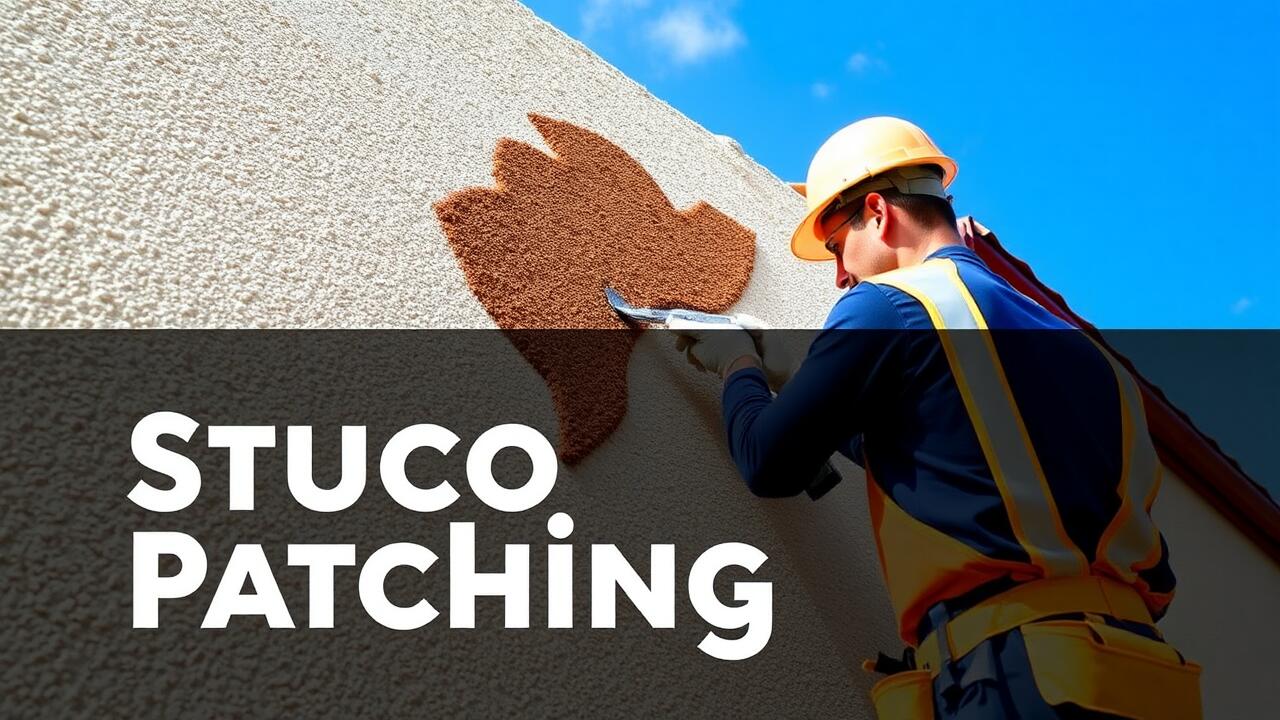
Step-by-Step Patching Process
The first stage of the stucco patching process involves assessing the damage. Identify any cracks, holes, or loose pieces that need attention. It is essential to clear the area of debris and any loose stucco. Use a wire brush to clean the surface, ensuring better adhesion of the new material. After the area is prepared, you should moisten the surrounding stucco slightly, as this helps in achieving a strong bond with the patching compound.
Next, apply the chosen patch material following the manufacturer's instructions. If you are in an area like Downtown Los Angeles, Los Angeles, consider using a blend that matches the texture and color of your existing stucco. Use a trowel to spread the patch evenly, feathering the edges to blend it seamlessly into the original stucco. Allow the patch to cure as per the product specifications, monitoring the time and conditions to ensure optimal results.
Preparing the Area for Repair
Before beginning any patching work on stucco, it's essential to prepare the area adequately. First, assess the damage and determine how extensive the repairs will be. Clear away any loose or damaged material using a chisel or putty knife. This process ensures a clean surface for the patching material to adhere to. Additionally, protect the surrounding areas by covering them with plastic sheeting or tarps. This measured approach prevents dust and debris from spreading during the repair process.
Once the area has been cleared and protected, it's time to clean the surface thoroughly. A pressure washer can be helpful for removing dirt, grime, and old paint. If you’re considering professional options, look for services offering Stucco Patching in Chatsworth, Los Angeles. In some cases, you may need to moisten the area before applying the patch to create a better bond. Taking these steps will ensure a more effective and lasting repair outcome, setting the stage for the patching process.
Choosing the Right Patch Material
When it comes to stucco patching, selecting the appropriate patch material is crucial for achieving a seamless finish and ensuring durability. Various options are available, each suited to different conditions and types of stucco. For minor cracks and surface imperfections, a premixed stucco patch can provide a quick and effective solution. More extensive damage might require a traditional stucco mix, which includes sand, cement, and water to match the surrounding texture precisely.
For residents looking into services such as stucco patching in North Hollywood, Los Angeles, understanding the specifics of each material can be beneficial. Fiber-reinforced patching compounds offer added strength and flexibility, making them ideal for areas prone to movement or additional stress. It's essential to consider the weather conditions prevalent in Los Angeles as well. Choosing a material that can withstand heat and occasional rain will prolong the life of the repair and maintain the aesthetic appeal of the property.
Options for Different Types of Stucco
When considering stucco patching, it's essential to identify the type of stucco used in your home. There are primarily three variations: traditional stucco, synthetic stucco, and lath and plaster. Each type requires different patching materials and techniques for effective repair. For traditional stucco, a cement-based patching compound works well. Synthetic stucco, often made with foam and acrylic, may require a different blend that adheres properly without compromising the finish. Understanding these differences allows homeowners to choose the most suitable repair option for their specific stucco type.
In areas like Westlake, Los Angeles, where stucco exteriors are prevalent, homeowners might often face repair situations. Local climate and environmental factors influence the wear and tear on stucco surfaces. When opting for stucco patching in Westlake, Los Angeles, individuals should consider whether to employ a ready-mixed solution or a custom blend that matches the existing texture and color. It's crucial to ensure the patch not only integrates well visually but also withstands local weather conditions, which can significantly impact the longevity of the repair.
DIY vs. Professional Patching
Choosing between DIY patching and hiring a professional often depends on your skill level and the extent of the damage. For small cracks or minor repairs, many homeowners find success in tackling the job themselves. This approach can save money and provide a sense of accomplishment. Basic tools and patching materials are widely available, making it accessible for those willing to put in the effort.
On the other hand, significant repairs or extensive damage are best left to professionals who specialize in stucco patching. Their experience ensures that the repair blends seamlessly with the existing exterior. In areas like Chatsworth, Los Angeles, where stucco is commonly used, local experts can offer insight into the specific conditions that affect your home. Hiring professionals can also save time and reduce the risk of mistakes that may lead to further issues down the line.
Weighing the Pros and Cons
When considering stucco patching, homeowners often find themselves weighing the benefits against potential drawbacks. On one hand, patching can enhance the aesthetic appeal of a home while also providing protection against further damage caused by moisture or insects. A well-executed patching job can extend the life of the stucco, making it a worthwhile investment for many. This can be particularly significant in areas like North Hollywood, Los Angeles, where the climate can challenge the integrity of exterior surfaces.
However, DIY patching might not yield the desired results for everyone. Without proper experience or techniques, amateur attempts can result in mismatched textures or colors that detract from the home's overall appearance. In some cases, hiring a professional may seem costlier initially but could ultimately save money by ensuring a high-quality finish. Homeowners in North Hollywood should carefully assess their skill level and the condition of their stucco before making a decision.
FAQS
What are the common signs that my stucco needs patching?
Common signs that your stucco needs patching include cracks, holes, loose or flaking material, and signs of water damage such as discoloration or mold growth.
Can I patch stucco myself, or should I hire a professional?
You can patch stucco yourself if you have the right skills and tools, but hiring a professional may be advisable for larger repairs or if you are unsure about the process.
What materials are best for patching stucco?
The best materials for patching stucco include premixed stucco patch, Portland cement, or a stucco repair compound, depending on the type of stucco and the extent of the damage.
How long does it take to patch stucco?
The time it takes to patch stucco depends on the size of the repair; minor patches can take a few hours, while larger repairs could take a day or more to complete.
Will patched stucco blend in with the existing surface?
If done correctly, patched stucco can blend in well with the existing surface, especially if you match the texture and color. However, achieving a perfect match may require additional touch-ups.
